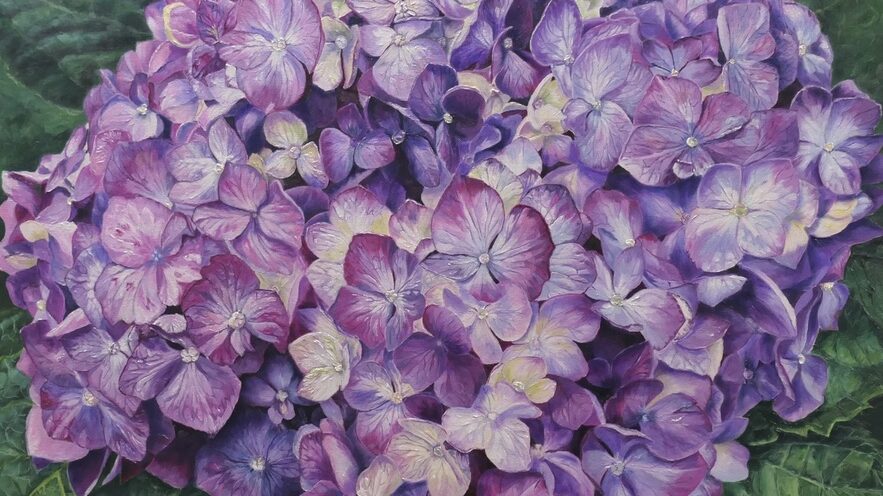On the easel a poured water-colour painting of sunshine yellow azaleas
After completing a number of recent paintings with a more traditional approach, I had to step back and relearn how to approach work on a poured water-colour painting. I work in high detail so I spend a lot of time up front planning the work and with the drawing process. I really recommend that you start out with a solid drawing/outline of your subject – this up front planning will help to prevent problems later when you have a large amount of masking compound and paint applied and the lines get blurred.
This painting is a commission with a bit of a twist. My client liked the composition of one variety of yellow azalea I photographed and the colors of another. So this painting is requires additional thinking time to keep it all straight.
Yellows are also tricky to work with. Even though the colour saturation can be intensified by either layering on additional layers or using deeper pigments, there is really little contrast between the shades until you introduce another colour. This became particularly noticeable after I applied the second wash. The depth and dimension only started to develop after the third pour when I introduced the light orange. Adding to my confusion the dried colour of the mask is yellowish as well.
I keep my spray bottle very close when pouring as I do not want the washes run off to overpower the background area. After I do the pour and coax the paint where I want it, I spray the background area quite heavily to lighten the impact to that area (unless of course I want the poured colour there).
Coming up next there will be a redder orange pour and then I will start in with the background greens.
There will be at least three more pours before I start the work to remove the mask.

